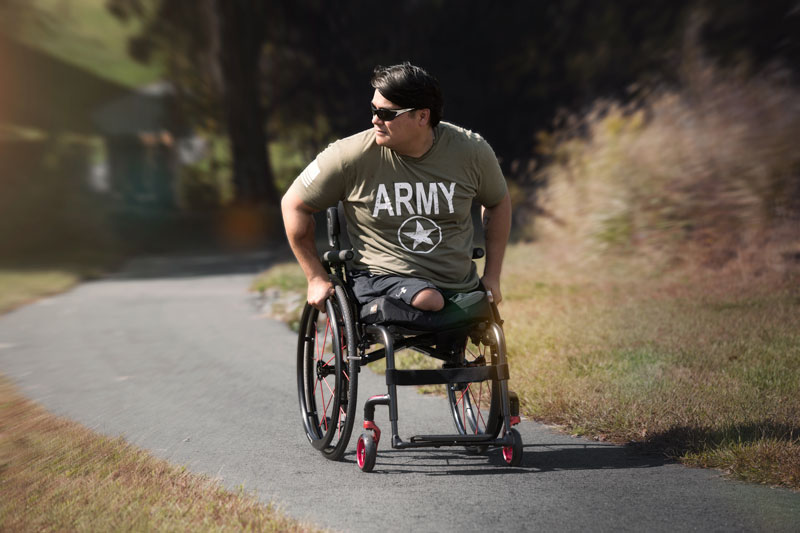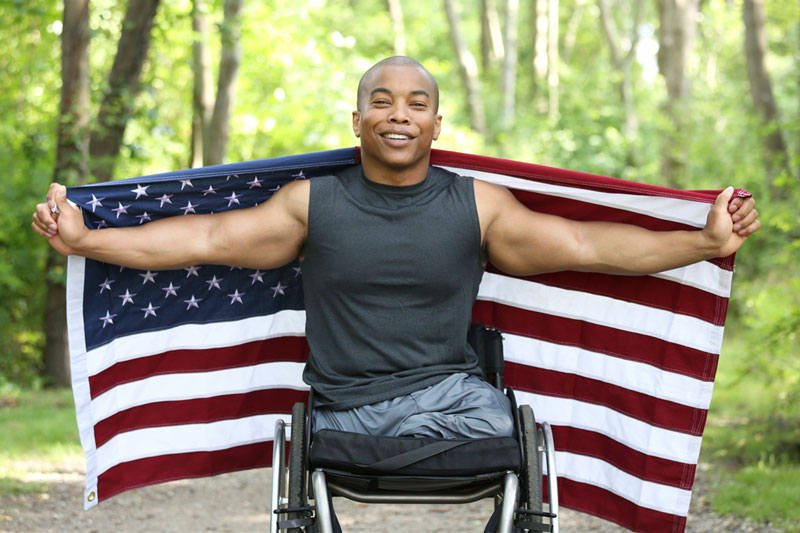As a veteran myself who also works with the VA (U.S. Department of Veterans Affairs) regularly, I hope I can help explain some of the process in obtaining a wheelchair from the VA. This is basic information; in-depth details of every aspect of this would take considerably more space than available on this blog. Please contact the VA directly if you're looking for more detailed information on any aspect of this process.
Enrollment
Getting into the VA to be evaluated can be a confusing process. The first step is that all veterans must complete a VA Form 10-10EZ - Enrollment Application for Health Benefits. This is available online or at any VA healthcare facility.

If you have already been awarded a VA Disability benefit, this will be quick and easy. However, you will need to provide information on any health insurance that covers you - including Medicare and/or Medicaid. Veterans with a service-connected disability will receive care.
If you are not receiving benefits from the VA, you will need to provide your DD-214 and you will be required to complete a financial information section. The information required, but is not limited to, includes your and your spouse's gross income from employment or retirement/pension income. You will then be able to deduct non-reimbursed medical expenses paid by you or your spouse. The VA will do a financial assessment (also known as a means test) from this information to determine if the veteran is eligible for enrollment and whether or not they have to pay copays for for their health care or prescription medication (this is required by law).
There are certain veterans who are exempt from this financial disclosure - the list includes but is not limited to: former POWs, recipients of the Purple Heart, recently discharged combat veterans, those who served in Vietnam between 9 January 1962 and 7 May 1975, and those who served in southwest Asia during the Gulf War between 2 August 1990 and 11 November 1998.
Scheduling an Appointment
Once you are enrolled, know that all VAs have the requirement of providing each veteran direct access to a mobility assessment; you do not need a referral from your Primary Care Provider. Each VA has their own process of scheduling the assessment - some VAs have a specific date for a "walk-in" clinic while others have weekly mobility clinics that require scheduling an appointment.
It is important that any veteran and his/her family understand that the approval for a mobility device (a walker, a scooter, a manual wheelchair, or a power wheelchair) is made by the physician/therapist based on the medical needs of the veteran. The veteran must present with a medical condition that supports the need for mobility assistance. The physician/therapist will conduct an evaluation with the veteran to determine if this is the situation. If you were denied a mobility device by objective evaluation, it's likely that it was determined that some other treatment program/intervention would be in your best interest. As your situation changes, you can request a reevaluation. Also, please understand, the evaluation can be different from VA to VA. That is to say, mobility needs in Hawaii would not be the same as mobility needs in Alaska. The needs in my home, Seattle, are certainly different than those in Montana or perhaps Phoenix.
If you have been denied a mobility device (manual wheelchair, power wheelchair, or scooter) by Medicare, do not hesitate to request an evaluation at the VA. The Medicare criteria and the VA criteria are similar, but not the same. There are additional services available from the VA such as equipment needed to transport either just the mobility device or the veteran in his/her mobility device. There is also additional assistance available through the VA's Driver Rehabilitation Services.
Filing for VA Benefits
If you have what you believe is a disability or condition as a result of your military service, I strongly recommend you file for benefits consideration with the VA. As quickly as possible, complete and submit the VA Form 21-0966 - Intent to File a Claim. You do not have to provide information with this form (it gives you one year to compile your documentation), however if the VA rules in your favor, your benefits will be backdated to the date the VA received that original Form 21-0966.

I also personally recommend that you do not attempt to file for benefits on your own. There are Veterans Service Organizations (VSO) that have service officers trained in helping you accomplish this. You should never pay for someone to help you file for your VA Disability benefit. Contact the American Legion, Veterans of Foreign Wars (VFW), the Disabled American Veterans (DAV) or the Paralyzed Veterans of America (PVA) for assistance in filing your benefit claim.
Recycling Used Equipment
One last comment: as a member of the American Legion, we are frequently asked to accept donations of scooters or power wheelchairs for redistribution to veterans in need. I strongly recommend against this. Manual wheelchairs, scooters, and power wheelchairs are Medical Equipment which is highly regulated by the FDA. There are what I believe to be huge liability issues taken on if you were to give an inappropriate piece of equipment to another veteran. What if the batteries exploded, or if the wheel lock failed on that manual chair, or if a power wheelchair died in the middle of an intersection? Perhaps the device was simply inappropriate for the veteran; I'm aware of legally blind veterans routinely asking for power wheelchairs or a patient with dementia asking for a scooter. A veteran who truly medically qualifies for a mobility device can get the proper equipment, if not through the VA, then through Medicare, private heath insurance, or Medicaid.
I hope this bit of information is helpful, and to all of my fellow veterans: thank you for your service!
To all Vietnam veterans: welcome home, buddy!
About the Author
Kittie LaFazia is a Vietnam-era veteran who served with the 8th Infantry Division in Germany. She works hard to support her fellow veterans through membership in the American Legion. She is a mom, grandmother, and great-grandmother, as well as a Wood Badge trained Scoutmaster with the Boy Scouts. She has worked in the CRT industry as a manufacturer's representative for 18 years and currently supports five different VA rehab clinics (one regional SCI clinic), and over 20 different VA PT/OT. Her father was a World War II Marine, her husband is a U.S. Army veteran, and her oldest daughter served one tour in Afghanistan.
Most of the stories here on Live Quickie were submitted by readers. Do you have a story to tell? We'd love to hear it. Submit your story here.